Gotcha! I’m actually not going to talk about the program, All About Spelling, because I haven’t used it, but I am going to speak about spelling and right-brained, creative learners. Often, it’s these types of learners that propel a parent to get the program All About Spelling. But maybe, if a parent knows more about how spelling works with right-brained children, it will open up more options as well, and certainly more information and knowledge.
It’s said that any speller, left- or right-brained dominant, tend to become proficient in spelling two years after reading fluency. Since a left-brained dominant child tends to learn to read between 5 and 7, they tend to be good spellers “early” as well. Further, spelling is in their wheelhouse of universal gifts of word-based thinking and sequential processing. These children learn to read in a part-to-whole fashion, naturally focusing in on the parts of a word to learn it, often via phonics, which is the same process needed for spelling. It’s advantageous for them to learn to spell while they learn to read. It enhances both experiences for them.
For a right-brained child, it’s a very different story because it’s a very different process and timeframe. The universal gifts of a right-brained child are picture-based thinking and an extraordinary imagination. Because pictures are the 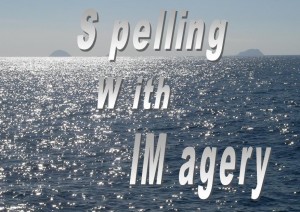 primary focus, spelling is not advantageous to the reading process. As mentioned in my last post, right-brained people translate all words into pictures as they read. Ideally, they skim across the top of words (silently) as they read enough to “catch the visual” or translate the words into images. That means they are not focusing on the parts of the words, which spelling requires, but the whole, at this point. Therefore, a right-brained child might do best to begin spelling skills two years after reading fluency, as it requires a different process to reading. A right-brained child is focused on the whole when learning to read, and spelling requires a focus on the parts in order to learn to spell. So, how does a right-brained child learn to spell well?
primary focus, spelling is not advantageous to the reading process. As mentioned in my last post, right-brained people translate all words into pictures as they read. Ideally, they skim across the top of words (silently) as they read enough to “catch the visual” or translate the words into images. That means they are not focusing on the parts of the words, which spelling requires, but the whole, at this point. Therefore, a right-brained child might do best to begin spelling skills two years after reading fluency, as it requires a different process to reading. A right-brained child is focused on the whole when learning to read, and spelling requires a focus on the parts in order to learn to spell. So, how does a right-brained child learn to spell well?
I can think of three ideas off the top of my head for exposure to spelling during the pre-fluency reading stage for right-brained children (which tends to be between 8 and 10 years old). This enhances their (often) sight word based learning focus while learning to read versus competing with it. The first is to 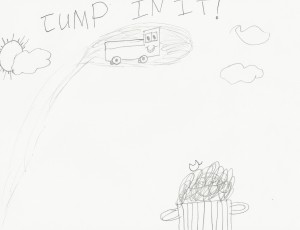 willingly be your child’s dictionary. When a creative, right-brained child is writing a story or script or poem or whatever type of writing or expressing their idea that motivates them, it may be common for them to shout, “How do you spell x, Mom!?” Our conditioned response is to either create a spur-of-the-moment phonics lesson or instruct them to “look it up yourself.” This discourages the right-brained child’s focus on the substance of their expression project in getting their thoughts out. They know you are the most useful, convenient source of spelling knowledge, and they are trying to use it. I did this willingly for my first son, who is my most natural speller of all my right-brained children.
willingly be your child’s dictionary. When a creative, right-brained child is writing a story or script or poem or whatever type of writing or expressing their idea that motivates them, it may be common for them to shout, “How do you spell x, Mom!?” Our conditioned response is to either create a spur-of-the-moment phonics lesson or instruct them to “look it up yourself.” This discourages the right-brained child’s focus on the substance of their expression project in getting their thoughts out. They know you are the most useful, convenient source of spelling knowledge, and they are trying to use it. I did this willingly for my first son, who is my most natural speller of all my right-brained children.
The second idea is using technology to provide this type of instantaneous spelling feedback through a voice recognition program. As the creative ideas flow from a young right-brained child’s mind, and the dictation program instantly writes it for them, the child gets immediate spelling reinforcement and feedback on what that word looks like in written form. Yet, the creative child can still focus on the content, which is their strength area at this point when pursued in a manner that reflects their gifts.
The last idea is to play games with or use a program such as Primary Phonics that introduces spelling through word families and pictures. A right-brained child may be able to pick up this level of spelling through doing the worksheet, or you could 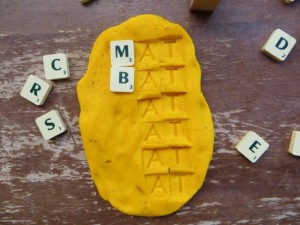 create flashcards with the pictures from the resource. It can be self-correcting if you have the picture on one side and the word on the other side. Another effective game for right-brained children with word families is to play the game, “Make a new word changing one letter.” Change rat to cat by changing one letter. Change cat to cot by changing one letter. Be sure that the visual is well-established before instituting this game, however. This should be a fun way to practice known words versus learning new ones.
create flashcards with the pictures from the resource. It can be self-correcting if you have the picture on one side and the word on the other side. Another effective game for right-brained children with word families is to play the game, “Make a new word changing one letter.” Change rat to cat by changing one letter. Change cat to cot by changing one letter. Be sure that the visual is well-established before instituting this game, however. This should be a fun way to practice known words versus learning new ones.
Once one or two years after reading fluency has occurred (usually between 10 and 12 years old), and there are still problems with spelling, it’s time to take the information you know about how a right-brained learner processes information and analyze where the breakdown may be occurring. Let me give an example with my builder son. At 13-14 years old (after the 11-13 year brain shift), he noticed and wanted to improve on his poor (actually atrocious) spelling skills. As I asked him to spell various words, I noticed he did alright with smaller words like cat or dog, but with words of more than one syllable, he failed miserably. I realized he didn’t notice or know how to break down words into parts. The resource we started with because of this knowledge was Greek and Latin roots. Not only do these types of resources explain there are parts, but shows that there are meanings to each part! Thus, even a visual can come into play in learning parts of words. When he quickly discovered this knowledge, he exclaimed, “Why didn’t you tell me words were like LEGO?”
After he understood there were parts to words and began to successfully work with that knowledge, we discovered that his weak auditory processing was also hindering his spelling progress. My builder son didn’t know how to translate the part sounds into letters. For instance, it was hard for him to discern and translate 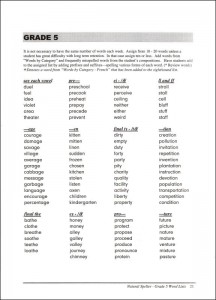 the part “tion” in the word “action” efficiently. I purchased and used the resource Natural Speller in this instance. I didn’t use it for the purpose it was created, but this resource comes with lists of words categorized by parts and organized by grade level. So, one list may have action, creation, pollution, invitation, repetition, etc. in Grade 5. I would first say the sound group we were focusing on, helping him cue in, and then sharing what the translation was, and then I would give him 2-4 words from the list for 2-3 days or until the word list was completed. With a year’s practice through the various sound parts and various grade levels, he became good at translating even new sounds into words.
the part “tion” in the word “action” efficiently. I purchased and used the resource Natural Speller in this instance. I didn’t use it for the purpose it was created, but this resource comes with lists of words categorized by parts and organized by grade level. So, one list may have action, creation, pollution, invitation, repetition, etc. in Grade 5. I would first say the sound group we were focusing on, helping him cue in, and then sharing what the translation was, and then I would give him 2-4 words from the list for 2-3 days or until the word list was completed. With a year’s practice through the various sound parts and various grade levels, he became good at translating even new sounds into words.
Once we did the troubleshooting of these two areas with his spelling, it completed his spelling skill development. To do an overall practice with spelling, we worked from Sequential Spelling, which utilizes the game format of “change one letter” type idea. I used the resource actually the way it was produced for once! My builder son progressed from atrocious to a good speller status.
A very important key to note at this time is that my builder son didn’t have a negative connotation to spelling. He actually had consistently created written work of his own creation throughout his childhood, but I intuited that correcting 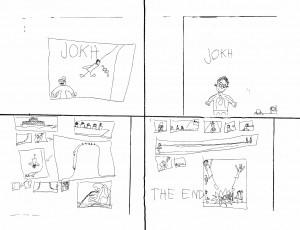 it at that time would have hindered this positive relationship he had with written words. I accepted the creation behind the work and commended it for his creativity, his strength, and honored the process he was walking in adopting left-brained skill strengths into his right-brained repertoire. This ingredient, along with readiness to develop a weak area, married with the right resources that work with his process produced wonderful progress.
it at that time would have hindered this positive relationship he had with written words. I accepted the creation behind the work and commended it for his creativity, his strength, and honored the process he was walking in adopting left-brained skill strengths into his right-brained repertoire. This ingredient, along with readiness to develop a weak area, married with the right resources that work with his process produced wonderful progress.
There are other strategies in working with right-brained learners in cuing into spelling differences. Using color to highlight letters that go together or problem areas for the child in remembering can be successful. Creating pictures around difficult, non-pictorial Dolch words can be a way to remember how to both read and spell them. Or even modeling the words out of clay or Play-doh can be a tactile way for certain learners to remember words. The process and timing for spelling may be different than found in school (and successful for left-brained learners), but the right-brained way to spelling can be highly successful when honored.






Pingback: The Natural Learning Development for Right-Brained Children | The Right Side of Normal
Pingback: The Natural Learning Development for Right-Brained Children | The Right Side of Normal
Pingback: Strengths-Based vs. Weakness-Based Education |
Pingback: Writing in the Teen Years: The Mentored Path |